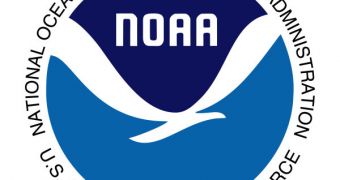The story of National Oceanic and Atmospheric Administration (NOAA)'s N Prime satellite mission is one riddled with despair and grief for most of the members involved in the project. Scheduled to be completed more than 4 years ago, the nearly-done device suffered a terrible crash at a Lockheed Martin assembly line, in Sunnyvale, California, some 5 years ago. A cart carrying the delicate piece of technology collapsed on the side, and plummeted the machine on the floor. Reparations were extensive, and took several years to complete. In the end, after exhausting a $217-million budget, NOAA officials have announced just recently that on Tuesday the mission is scheduled to take off from the Vandenberg Air Force Base, in California, at 2:22am PST (10.22 GMT).
The 3,130-pound satellite will be carried to an orbit 530 miles above ground by a Delta 2 carrier vehicle, complemented by three 40-inch-wide solid motors. It is due to be the last of the agency's large number of observation satellites above the planet, whose only purpose is to detect dangerous cloud formation before they can result in hurricanes or other such atmospheric events. Early warning is crucial in avoiding massive loss of human lives, as evidenced by the fact that a slow response time during Katrina led to significant losses.
In order to complete the new device, the reconstruction team had to swap more than 75 percent of the pieces belonging to the crashed one. This was a painstaking effort, driven by a simple philosophy “If we had a spare part, we would swap it out. If we didn't have a spare part, we would attempt to fix. If we couldn't fix, then we would have to buy new.” NOAA's Satellite and Information Service director for the Office of Systems Development, Gary Davis, embraced this line of thought.
“It was a Saturday and I was sitting at home when I got a phone call from my program manager. The picture was very scary. We did not know the cause, and we did not know the impact at the time. We just knew that we stopped all work. We froze what was going on, and we got a team together over that weekend that got out to Lockheed Martin on Monday morning to start investigating the status of the spacecraft and the cause of the accident,” he said, talking about that September day five years ago when the team at NOAA learned about the accident at Lockheed Martin.

 14 DAY TRIAL //
14 DAY TRIAL //